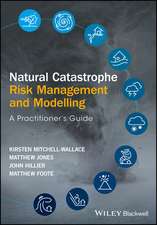Questions of Uniqueness and Resolution in Reconstruction from Projections: Lecture Notes in Biomathematics, cartea 26
Autor M. B. Katzen Limba Engleză Paperback – 5 noi 1978
Din seria Lecture Notes in Biomathematics
-
 Preț: 378.54 lei
Preț: 378.54 lei -
 Preț: 380.45 lei
Preț: 380.45 lei -
 Preț: 413.37 lei
Preț: 413.37 lei -
 Preț: 390.63 lei
Preț: 390.63 lei -
 Preț: 396.24 lei
Preț: 396.24 lei -
 Preț: 387.38 lei
Preț: 387.38 lei -
 Preț: 385.08 lei
Preț: 385.08 lei - 5%
 Preț: 366.56 lei
Preț: 366.56 lei -
 Preț: 384.70 lei
Preț: 384.70 lei -
 Preț: 388.13 lei
Preț: 388.13 lei -
 Preț: 394.29 lei
Preț: 394.29 lei - 5%
 Preț: 389.93 lei
Preț: 389.93 lei - 5%
 Preț: 370.74 lei
Preț: 370.74 lei -
 Preț: 384.86 lei
Preț: 384.86 lei -
 Preț: 387.96 lei
Preț: 387.96 lei -
 Preț: 404.29 lei
Preț: 404.29 lei -
 Preț: 391.61 lei
Preț: 391.61 lei -
 Preț: 384.48 lei
Preț: 384.48 lei -
 Preț: 384.48 lei
Preț: 384.48 lei -
 Preț: 379.68 lei
Preț: 379.68 lei -
 Preț: 384.09 lei
Preț: 384.09 lei -
 Preț: 405.66 lei
Preț: 405.66 lei -
 Preț: 379.48 lei
Preț: 379.48 lei -
 Preț: 400.65 lei
Preț: 400.65 lei -
 Preț: 385.25 lei
Preț: 385.25 lei -
 Preț: 390.25 lei
Preț: 390.25 lei -
 Preț: 395.47 lei
Preț: 395.47 lei -
 Preț: 378.71 lei
Preț: 378.71 lei -
 Preț: 382.95 lei
Preț: 382.95 lei - 15%
 Preț: 578.01 lei
Preț: 578.01 lei -
 Preț: 380.84 lei
Preț: 380.84 lei -
 Preț: 405.66 lei
Preț: 405.66 lei -
 Preț: 399.12 lei
Preț: 399.12 lei -
 Preț: 410.66 lei
Preț: 410.66 lei -
 Preț: 385.62 lei
Preț: 385.62 lei - 5%
 Preț: 371.10 lei
Preț: 371.10 lei -
 Preț: 378.71 lei
Preț: 378.71 lei -
 Preț: 386.99 lei
Preț: 386.99 lei -
 Preț: 401.61 lei
Preț: 401.61 lei -
 Preț: 350.30 lei
Preț: 350.30 lei -
 Preț: 383.33 lei
Preț: 383.33 lei -
 Preț: 408.54 lei
Preț: 408.54 lei -
 Preț: 398.53 lei
Preț: 398.53 lei -
 Preț: 399.67 lei
Preț: 399.67 lei -
 Preț: 391.79 lei
Preț: 391.79 lei -
 Preț: 384.86 lei
Preț: 384.86 lei -
 Preț: 401.61 lei
Preț: 401.61 lei -
 Preț: 392.60 lei
Preț: 392.60 lei -
 Preț: 406.05 lei
Preț: 406.05 lei
Preț: 383.71 lei
Nou
Puncte Express: 576
Preț estimativ în valută:
73.45€ • 79.81$ • 61.73£
73.45€ • 79.81$ • 61.73£
Carte tipărită la comandă
Livrare economică 21 aprilie-05 mai
Preluare comenzi: 021 569.72.76
Specificații
ISBN-13: 9783540090878
ISBN-10: 3540090878
Pagini: 192
Ilustrații: X, 180 p.
Dimensiuni: 170 x 244 x 10 mm
Greutate: 0.31 kg
Editura: Springer Berlin, Heidelberg
Colecția Springer
Seria Lecture Notes in Biomathematics
Locul publicării:Berlin, Heidelberg, Germany
ISBN-10: 3540090878
Pagini: 192
Ilustrații: X, 180 p.
Dimensiuni: 170 x 244 x 10 mm
Greutate: 0.31 kg
Editura: Springer Berlin, Heidelberg
Colecția Springer
Seria Lecture Notes in Biomathematics
Locul publicării:Berlin, Heidelberg, Germany
Public țintă
ResearchCuprins
I Description of the General Physical Problem.- The EMI Scanner — An Example of the Present State of the Art.- Reconstruction from Projections Models Many Physical Problems and Presents a Variety of Theoretical Questions.- The Difficulties Associated with the Theory of Reconstruction from Projections.- II Basic Indeterminacy of Reconstruction.- Theoretical Background.- First Theoretical Result with Practical Significance.- The Significance of the Nullspace.- Does There Exist a Restriction on the Domain of Pr? Which Makes N = (0)?.- Conclusions to Chapter II.- Proofs of Results Stated in Chapter II.- III A Reconstruction Space which does not Contain the Objective function.- A Reconstruction Space Based on the Fourier Transform.- Description of Our Choice of the Reconstruction Space.- Resolution of a Reconstruction ? Picture Resolution.- IV A Matrix Representation of the Problem.- Proofs of Propositions Stated in Chapter IV.- V Resolution in the Projection Data.- Projection Angles Affectthe Required Resolution.- Farey Series and Projection Angles.- Significance of the Farey Projection Angles.- Proofs of Results Stated in Chapter V.- VI Results Establishing the Uniqueness of a Reconstruction.- Interpretation of the Two Uniqueness Results: Proposition VI. 2 and Theorem 2.- There Is in Practice a Limitation on the Resolution in P?f.- Explanation of Theorem 2.- Uniquely Determined Picture Resolution.- Proofs of Results Stated in Chapter VI.- VII Dealing Effectively with Noisy Data.- Physical Justification of Importance and Sources of Noise.- The Effect of Noisy Data on the Uniqueness of a Reconstruction.- The Effect of Noise on the Consistency of the Data.- The Use of Least Squares — Advantages and Difficulties.- Statistical Considerations Relevant to the Use of Least Squares.- Optimizing the Stability of the Estimate of the Unknown Reconstruction.- Choosing the Best Projection Angles.- Conclusions to Chapter VII.- Appendix to Chapter VII — Statistical Reference Material.- VIII How a Reconstruction Approximates a Real Life Object.- Assumptions with their Justifications.- Consequences of the Assumptions.- Estimating ?h ? f? L2, i. e., How close is the obtained reconstruction to the unknown objective function?.- Significance and Applications of the Estimate of ?h ? f? L2.- Conclusions.- Proofs of Propositions stated in Chapter VIII.- IX A Special Case: Improving the EMI Head Scanner.- The Use of Purposefully Displaced Reconstructions.- Theorem 2 Applied to Four Sets of Purposefully Displaced Projection Data.- Estimating the Accuracy of a 74 × 74 Reconstruction, h74.- Obtaining a Uniquely Determined Reconstruction with 1 mm Resolution from 1 mm Resolution Projection Data.- Conclusions.- X A General Theory of Reconstruction from Projections and other Mathematical Considerations Related to this Problem.- A General Theory of Reconstruction from Projections.- Other Mathematical Considerations Related to Reconstruction from Projections.- Appendix — Medical Context of Reconstruction From Projections.- The Interaction of X-rays with Matter.- The Meaning of a Projection.- Thickness of the Slice.- Types of Detectors.- Parallel and Fan-beam Techniques.- Resolution of the Data.- X-Ray Exposure.- Miscellaneous Aspects of Data Collection.- The EMI Example.- Algorithms.- Representation of a Reconstruction.- The Diagnosis Problem.- References.















